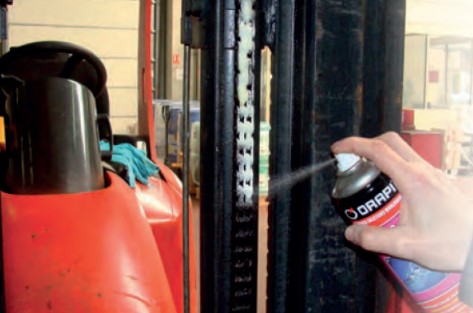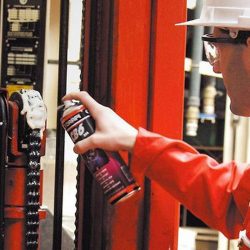What is Mineral Oil and How Is It Obtained?
Mineral oil; It is a lubricant, which is one of the products obtained in the refining process of crude oil. After the petroleum refining process in which it is produced, it is passed through special processes again and base oils used in the raw materials of mineral oils are obtained. Mineral oil is obtained as a result of mixing base oils with different viscosities and different additives selected to meet expectations and needs. Base oils and additives suitable for the intended use have critical importance in product selection.
What Are the Functions of Mineral Oils?
The surfaces of the parts that come out of the production, no matter how perfectly they are processed, are not completely shiny and smooth. On the surfaces of the parts coming out of the process; There are very small indentations and protrusions called asperites that can be seen with a microscope. When dry surfaces come into contact with each other during operation, the indentations and protrusions called asperit on the surfaces show a resistance against the movements of the surfaces. The resistance to movement is called friction. The main functions of the lubricants are to form a film layer on the applied surfaces, to keep the surfaces separate from each other, to prevent heating and wear that will occur as a result of friction, and to ensure easy movement of the parts.
What are the Differences of Mineral Oils?
Mineral oils; They are used in many areas such as engine lubrication, lubrication of hydraulic systems, lubrication of chain – bearing – bearing and gears, corrosion prevention, metal cutting and forming processes.
Produced machine, device, mold, apparatus, etc. Due to the unique working principle of all equipment, different working conditions and different working purposes, the oils used here provide a wide variety.
Mineral oils; They are classified as industrial oils, engine and automotive oils, lubricating preparations and greases.
Various brands and types of mineral oil are offered for sale. But considering that the raw materials of all these mineral oils are the same, what is the difference between these oils?
There are two reasons for this difference:
- The chemical properties of the base oils used in their production are different.
- Different type and amount of additives used in its production

Classification of Mineral Oils
According to the chemicals and additives used in the production of mineral oils
- Mineral Based Oils
- It is classified into two different groups as Synthetic Based Oils.

Additives
Additives are the substances used in order to add some properties to the produced oils, to improve their existing properties, to eliminate or minimize some undesirable properties.
One or more additives can be used together to give these properties to the oils produced.
Major Additives
Anti-Corrosion Additives
By covering the metal surface like a protective film, it protects the metal from acids (corrosive substances) formed as a result of combustion, and prevents the metal from being corroded. They prevent the abrasion of chemical substances on engine parts.
Anti-Oxidation Additives
They are added to prevent the oxidation process that can cause oil thickening and deposit formation as a result of contact with air. Oxidation in the engine; causes the formation of polished, lacquered and resinous deposits.
Detergent Additives
They are used to hold metal surfaces at high temperatures. It takes the rust, residue, ash and carbon deposits formed between the vital parts of the engine from the surface and transfers them to the body of the oil.
Dispersing Additives
They keep the residue and deposits in the oil suspended until the oil change. They break up the sediment ashes formed between the moving parts, ensure that they are kept separate, and prevent the formation of abrasion on the surfaces.
Antifoam Additives
Foam appears during operation with the ingress of air into the oil. Deposits and even additives cause a certain amount of foaming. Antifoam additives break bubbles and destroy foaming so that the oil has a smooth surface.
Rust Preventing Additives
It is released in water as the engine burns the fuel. Rust preventive additives form a film on the metal surface and prevent moisture from forming.
Pour Point Lowering Additives
The pour point is the point where the pouring property of the oil is almost lost. These additives allow the oil to continue to flow at lower temperatures than normal. This allows the oil to be used in very cold conditions.
Viscosity Enhancer Additives
Oils whose viscosity does not change much with temperature are preferred because these oils can be used both in hot and cold temperatures. An oil whose viscosity changes excessively with temperature can cause problems. Viscosity enhancers are used to solve this problem. They are added to contribute to the fluidity of engine oil.

Where are Mineral Oils Used?
Mineral oil manufacturers have succeeded in producing mineral oils with higher viscosity ranges day by day. This type of oil creates very suitable options for the use of businesses in many sectors.
We can list the usage areas in terms of mineral oils and their properties as follows.
- Mineral oil using liquid lubricants is very successful in lubricating the link and bearing chains in powder coating lines.
- They are used for the lubrication of machines used in packaging processes.
- The use of mineral oil in machines operating in high temperature ranges is quite humid. In this way, they contribute to prolonging the life of the machines.
- They are preferred as hydraulic lubricants in machines used in the pharmaceutical industry with their low viscosity ratios.
- They are used to lubricate the chains of machines operating in low temperature environments where the possibility of contact with food is high.
- Mineral oil is used in all closed circulation systems.
- They are used in the lubrication of the slide systems in gear couplings.
- They are used in closed systems operating under heavy conditions, impact or load.
- They take an active role in meeting the lubrication needs of the textile industry. They play an important role in the lubrication of stenter chains, especially in machines operating with an automatic lubrication system.
As Pulsar Chem., we offer the oils and greases of the Orapi company, which produces in France and in several different countries, in our portfolio. You can reach all technical details on our website www.pulsar.com.tr and our technical sales representatives.
| Yazan: Murat YEŞİLDAĞ |

